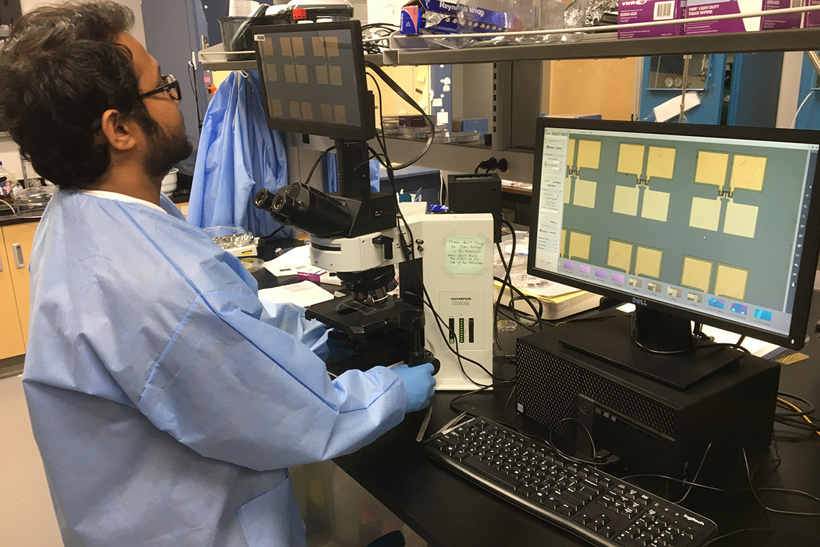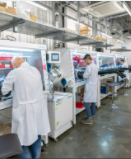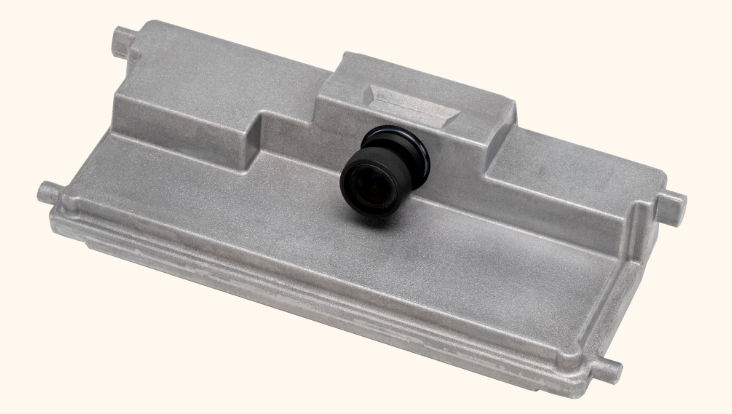Your location:Home >Automotive News >
Time:2022-06-23 17:26:44Source:
According to foreign media reports, the University of Central Florida (UCF) has developed an artificial intelligence (AI) device that can mimic the retina of the eye.The research could lead to advanced AI techniques that can instantly recognize what is seen, such as automatically interpreting pictures taken by cameras or phones.In addition, the technology can also be used in self-driving cars and robots.

The researchers tested the device on a chip (Credit: University of Central Florida)
The device can see wavelengths beyond what the human eye can achieve, and can see the ultraviolet, visible, and infrared spectrums.What makes it unique is the ability to combine three different operations into one.As with technologies such as self-driving cars, current smart imaging technologies require data to be sensed, memorized and processed individually.The device designed by UCF can combine three steps and is much faster than current technology.In addition, the device is so small that it can fit hundreds of these devices on a one-inch chip.
"This will change the way artificial intelligence is implemented today," said Tania Roy, assistant professor in UCF's Department of Materials Science and Engineering and the Center for Nanoscale Science and Technology. "Today, all devices are self-contained components and run on traditional hardware. Now, we can Compute inside the sensor with a single device on a small platform."
The research team developed the technology based on previous research into building brain-like devices that would allow AI to work in distant regions and in space."We had devices that behaved like synapses in the human brain, but we didn't feed them images directly," Roy said. "Now, by adding image perception to them, we have synapse-like devices. Perceiving, processing, and recognizing images can be the same as the "smart pixels" in a camera."
Molla Manjurul Islam, a doctoral student in UCF's Department of Physics, said that for autonomous vehicles, the versatility of the device could make it safer to drive in a variety of conditions, including at night.
"If you're driving a self-driving car at night, and the car's imaging system only works on certain wavelengths, such as visible wavelengths, it won't be able to see what's ahead," he said. "In this case, our device , you can see the whole situation. There is no such device that can work in the ultraviolet, visible wavelengths, and infrared wavelengths simultaneously."
The key to this technology is a nanoscale process made of molybdenum disulfide and platinum ditelluride to achieve multi-wavelength sensing and memory functions.The researchers also tested the accuracy of the device, allowing it to perceive and recognize images of mixed wavelengths - a number "3" in the ultraviolet range and an "8" in the infrared range (made up of mirrored numbers "3" together) .Tests have shown that the technology can recognize patterns, as well as a "3" in the ultraviolet range and an "8" in the infrared range.
Adithi Krishnaprasad, a doctoral student in UCF's Department of Electrical and Computer Engineering, said: "The accuracy of the device is 70%-80%, which means that there is a great opportunity to integrate it into hardware." The researchers also said that the project The technology has the potential to be operational within the next 5 to 10 years.
Statement: the article only represents the views of the original author and does not represent the position of this website; If there is infringement or violation, you can directly feed back to this website, and we will modify or delete it.
Preferredproduct
Picture and textrecommendation

2022-06-23 17:26:44


2022-06-23 17:26:45

2022-06-23 17:26:45


2022-06-23 17:13:10
Hot spotsranking
Wonderfularticles


2022-06-23 17:13:11


2022-06-23 17:13:12


Popularrecommendations
